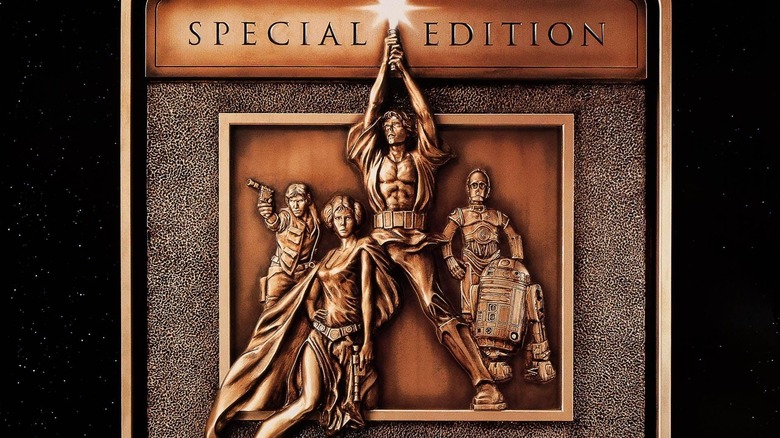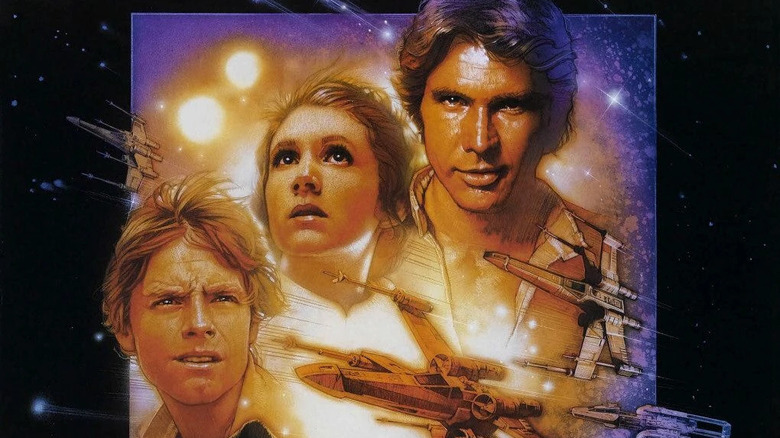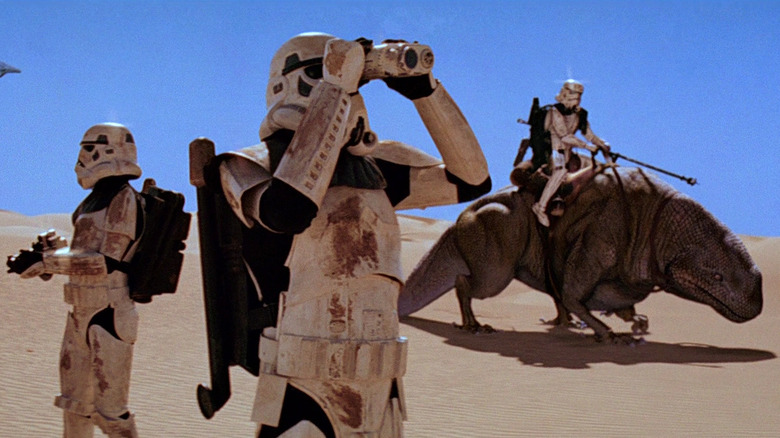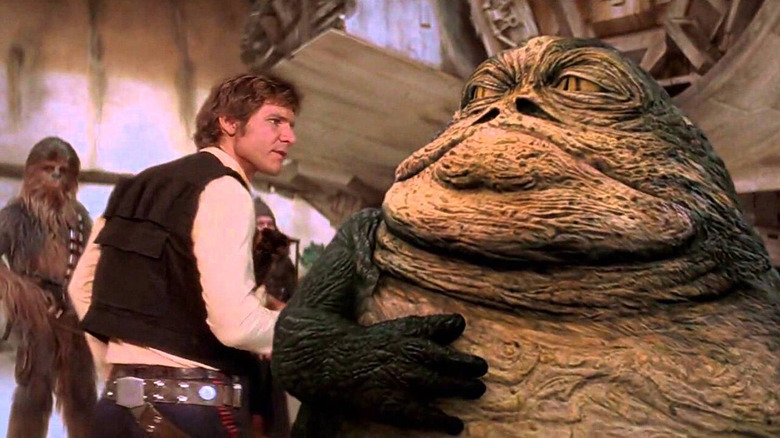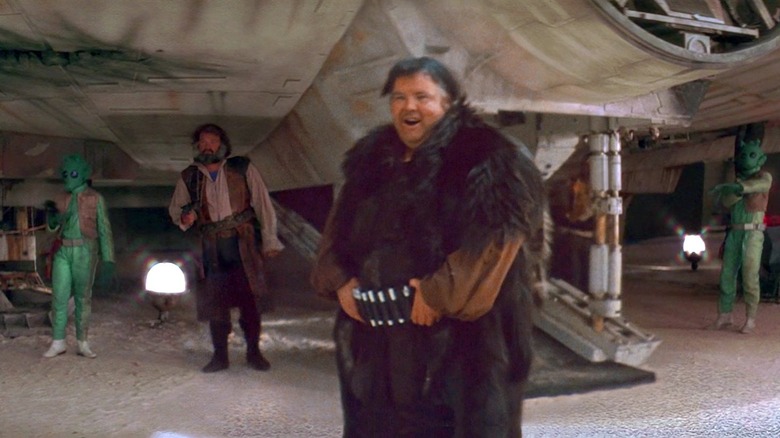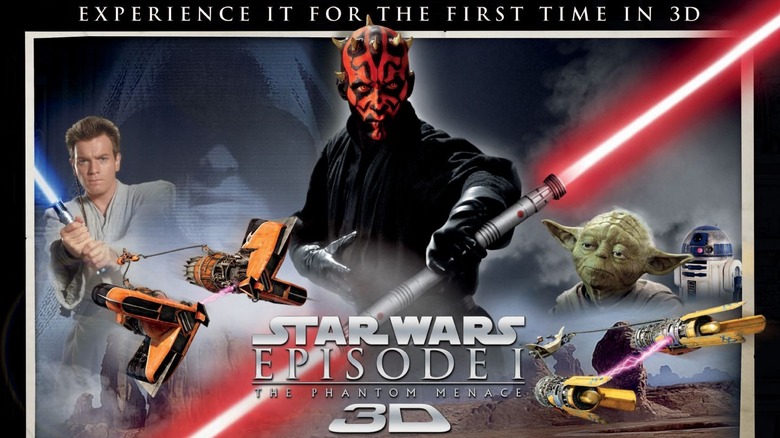A Truck Full Of Letters Got Star Wars Re-Released In Theaters
Everyone remembers the "Star Wars" Special Editions, which came out almost 30 years ago. In 1995 and 1996, Lucasfilm marketed the THX video release of the original "Star Wars" trilogy as, "The Original, one last time." That was because George Lucas had begun work on finishing "Star Wars" the way he saw fit, with the remastered and altered "Special Edition."
The Special Edition releases of "Star Wars" were a huge box office success and brought the saga back into the minds of an eager public in 1997, a full two years before it would take over the world once more with "The Phantom Menace." But according to Lucasfilm producer Rick McCallum, George Lucas wasn't initially interested in re-releasing the "Star Wars" films in theaters for its 20th anniversary.
A truck full of letters
On the occasion of the 50th anniversary of Lucasfilm, I was able to conduct an interview with Rick McCallum for "Star Wars Insider." It appeared in issues #204 and #205 and covered everything from his time working on "The Young Indiana Jones Chronicles" to the unmade "Star Wars Underworld" television show.
One of the most surprising answers I got was when I asked about the reasons behind the "Star Wars: Special Edition" release to commemorate the 20th anniversary of the original "Star Wars." The conventional wisdom was that it was a way for Lucasfilm to help finance the prequel films. More cynical folks would even refer to it as a cash grab. But there was a little more to it than that.
"The driving force behind it at that particular time was a wonderful guy who ran the marketing division of Fox named Tom Sherak," McCallum told me. The producer explained:
"He'd been begging George for years. He was a total 'Star Wars' freak. His whole family was, and he was really one of the greatest executives that ever lived. He was passionate about it, and he was passionate because he'd received literally hundreds of thousands of letters from parents saying, 'Please can you re-release the film? I want my son and daughter to see and experience what I experienced as a young person in the cinema.' And George wasn't really interested. And then one day, Tom Sherak arrived in a truck with all the letters, and it was just too overwhelming to say no."
Changed mind, changed film
When this truck full of letters arrived, it changed Lucas's mind, and he began to see the possibilities. From McCallum:
"I'll never forget, George had shown me his notebook... He used to write out of this high school notebook with a No. 2 unleaded pencil, and he had the original script of 'Star Wars.' And to the side were all the notes of the things that he couldn't achieve.
There were issues and things that he didn't like, that they didn't have the money to do, and things he would love to do if he ever had the chance to go back and revisit the films. And that became kind of the benchmark of, "Okay, these are all the things that he saw in his mind's eye. This is the film that he wanted it to be, but he didn't have the money or the resources at the time or the technology to be able to do it."
And suddenly, Fox gave us that opportunity."
When "A New Hope" was re-released in this "Special Edition" format, it grossed a whopping $35 million on its opening weekend, which surprised everyone. It was a huge hit, and then the re-release of "The Empire Strikes Back" in February and "Return of the Jedi" in March met similar success.
Research and development
Lucas and McCallum looked at this opportunity and release from Fox as a way to push the boundaries of the technology they would use for the prequels. They had already been pushing boundaries on television with "The Young Indiana Jones Chronicles," but the infusion of money from Fox let them take it to the next level.
Here's McCallum from that same "Star Wars Insider" interview:
"It became another great way for us to explore new technologies and new effects and also try and re-master the films. It became this kind of wacky, and yet glorious, experiment to try and get the films back to what he actually saw in his mind's eye because everything in the "Special Editions" is what he had written down.
There's a lot of controversy about certain aspects of things that he changed that people thought that he was just trying to milk it for money, but [at] the end of the day, he's a very transparent person. You get exactly what he is, and he tells you what it is, and he shows you what he did, and he shows you what he wanted, and you say, "Okay, screw it. Let's do it."
And that's what we did."
For Lucas' part, he's been consistent in that attitude, constantly tinkering to better match his vision for "Star Wars" until he sold the company to Disney. In fact, you can track his interest in improvement by watching each different release of the originally deleted Jabba the Hutt scene in "A New Hope." Each subsequent release has iterated on the effects, improving them with every bite at the apple.
The original theatrical editions
Since the release of the remastered versions of "Star Wars" in 1997, there have been other changes made as Lucas saw fit and new technology presented itself. The 4K version of the classic trilogy currently streaming on Disney+ is different than what we saw in theaters in 1997. But there's never really been an "original" theatrical edition of the original trilogy.
"A New Hope" differed greatly depending on whether or not you saw it in stereo or mono in its original 1977 run. And it was changed a couple of years later to add some more context and dub it "Episode IV." Furthermore, "The Empire Strikes Back" underwent changes from its original theatrical release almost immediately, and new prints with updated effects were rushed out before it had even been in theaters a month. There were other tweaks made to the eventual THX releases as well.
The "original" theatrical editions is sort of a myth everyone chases, and it seems like fans just want the version they respond to the best. Thankfully, the consternation over which version to watch has died a little bit each day forward. Kids today rarely know or care about the difference. They just load up what they want to see on Disney+, and that's what they get, for better or worse.
More theatrical re-releases
As of now, there aren't any wide re-releases of the "Star Wars" movies planned in the near future. They were all going to be released in 3D, starting with "The Phantom Menace" in 2012. Unfortunately, Disney canceled the plans for those continued releases after they acquired Lucasfilm in 2012.
Perhaps it would be worth a letter-writing campaign to fill a truck in order to get the Skywalker Saga — all nine parts — back on the big screen. It worked once. Why wouldn't it work again?
